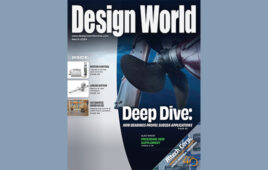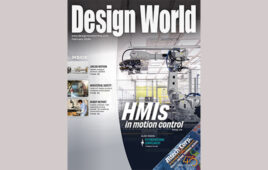In this issue:
82 Plastic bearings step up to the plate
66 Hybrid servos vs. standard servos: how do they stack up?
88 The IoT and motion control fuels a rising tide of Rapsberry PI, BeagleBoard an Arduino Boards
96 How IIoT enhances management tools
Another look at reshoring
Politicians’ claims to the contrary, there are certain manufacturing jobs that are simply not returning to the United States—some production is simply much less expensive in other countries, and some jobs are being replaced not by foreign workers but by robotics and automation efficiencies.
One area where we can look to make some small gains is in reshoring. While not a cure-all, it’s a strategy that certainly makes sense in some industries. The Reshoring Initiative was founded in 2010 to help facilitate understanding of the costs of offshoring. Those costs, which aren’t always realized until it’s too late, include inventory carrying costs; intellectual property risks; travel expenses to find, interview and check up on suppliers; shipping expenses; and opportunity costs due to long product pipelines.
Some recent commentary from the Reshoring Initiative’s president, Harry Moser and John Stoneback, president of Fairport Harbor, Ohio-based JM Performance Products brought some of these issues into focus.
The key driving variable to offshore was low labor costs in overseas markets like China. Moser said that when companies first began to offshore to China, wages were so low that the price differential was 30-40%.
“But now that the Chinese wages have come up, that price gap might only be 10 or 15%,” he said. “As a result, even China is outsourcing to Malaysia for cheaper labor.”
Stoneback explained that three key benefits to reshoring he’s seen are cost, time, and insurance, with inventory and space logistics being a potential fourth factor. He said that those factors are so small if a company is manufacturing domestically that the math can be done in your head—it is a simple cost analysis.
“There’s more control as the ability to guarantee delivery within five days or so, even by truck, anywhere in the U.S. is reasonable—therefore it’s easier to keep the supply going smoothly without any overseas delays or surprises,” he said. “Even the weather is a factor in delivering from overseas. The fact is, in overseas production you can anticipate having delays, spreading out money over time, multi-line invoicing, and increased insurance−plus you may have to over-produce to anticipate needed demand.”
 Stoneback postulates that a manufacturer can anticipate four to five times the shipping cost variance in bringing products in from China versus making them here. And that’s not factoring in any importer’s mark-up, which could be 15% or so.
Stoneback postulates that a manufacturer can anticipate four to five times the shipping cost variance in bringing products in from China versus making them here. And that’s not factoring in any importer’s mark-up, which could be 15% or so.
The Reshoring Initiative has an interesting “Total Cost of Ownership Estimator” on its website, at reshorenow.org/TCO_Estimator.cfm. This tool calculates 30 cost factors for each source—and may be a helpful tool for any manufacturers wrestling with the issue of whether to offshore or not.
Filed Under: Bearings, DIGITAL ISSUES • DESIGN WORLD





Thanks for mentioning the Reshoring Initiative. We encourage readers to use our TCO Estimator.
User data suggests that about 25% of what is now offshored would come back if companies used the TCO Estimator instead of buying on the basis of price. To get much of the other 75% back will require some combination of: much better skilled workforce recruitment
and training; lower USD; lower tax rates and regulations; a VAT (Value Added Tax). With enough of those changes most of the jobs we have lost to offshore can come back over a few decades as we develop the required skilled workforce.